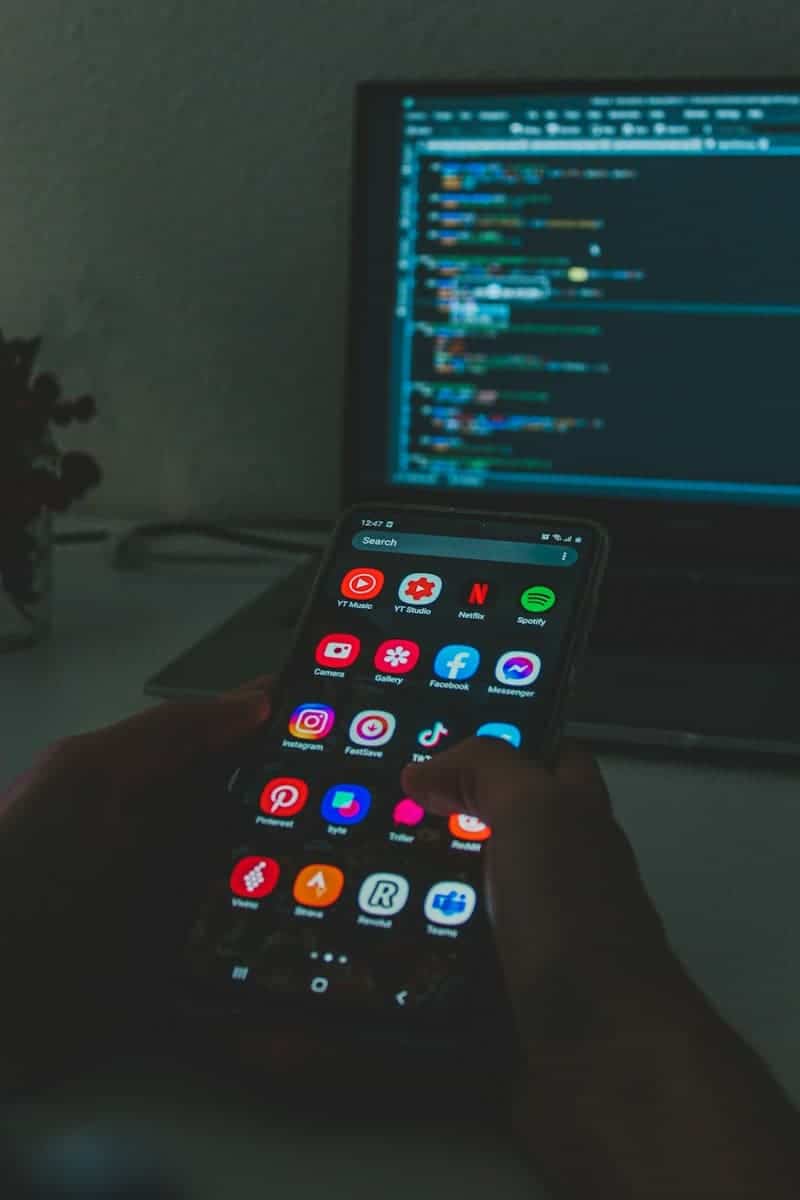If your phone screen keeps dimming, it can be quite annoying. This issue is usually caused by the Screen Timeout Settings, which turn off the screen after a period of inactivity to save battery. You can check your screen timeout settings and adjust them to a longer duration if needed. For Android phones, the problem might also be due to the Adaptive Brightness feature, which automatically adjusts the screen brightness based on the surrounding lighting conditions.
If it’s too sensitive, it might dim the screen even when you don’t want it to. You can try disabling adaptive brightness or adjusting its sensitivity. Keep in mind that the best solution depends on the specific cause of the problem. Start by checking your settings and trying simple fixes like restarting your phone. If the issue persists, consider exploring further troubleshooting steps or seeking professional help if necessary.
If you find yourself battling this problem, here’s a guide to resolving it.
Troubleshooting Your Android Phone’s Dimming Screen
There are several reasons why your Android phone screen might keep going dark or dimming unexpectedly:
Check Your Display Settings
Often, the cause is simply your display settings. Here’s how to adjust them:
- Screen Timeout: Find this in the “Display” section of your settings. Check how long it’s set for. A short timeout means your screen will dim and turn off quickly. Set it to a longer duration.
- Adaptive Brightness (Auto-Brightness): This feature alters your screen brightness based on the surrounding light. Turn it off in your “Display” settings if you prefer to adjust the brightness manually.
Disable Battery Saving Features
Battery saving modes can dim your screen to conserve power. Here’s how to check this:
- Battery Saver Mode: Head to your battery settings. If this mode is active, turn it off.
- App-Specific Battery Optimization: Some apps have their own battery-saving features. Check the settings of frequently used apps to ensure they are not suppressing your screen brightness.
Hardware Issues
If none of the above solutions help, there might be a hardware problem:
- Sensor Issues: The proximity sensor detects when your phone is close to your face during calls and turns off the screen to prevent accidental touches. If the sensor is malfunctioning, it might dim or turn off the screen even when it’s not near your face. Try cleaning the sensor or restarting your phone.
- Hardware Problems: In rare cases, a faulty display or other hardware issue might be causing the problem. If the issue persists, consider contacting your phone manufacturer or a repair service for further assistance.
Look Out for Third-Party Apps
Do you have any apps installed that control your screen brightness? Some third-party apps may override your phone’s main settings.
- Try uninstalling recently installed or suspicious looking apps to see if that solves the problem.
- Software Glitches: Sometimes, software bugs or conflicts can cause the screen to behave erratically. Try restarting your phone or updating your software to the latest version.
Table of Common Causes and Solutions
| Problem | Solution |
|---|---|
| Short screen timeout | Increase the timeout duration in Display Settings. |
| Adaptive Brightness / Auto-Brightness | Disable it in Display settings. |
| Battery Saver Mode | Turn it off in Battery settings. |
| Third-party apps | Uninstall any brightness-controlling apps. |
| Faulty light sensor | Visit a phone repair shop. |
Phone Screen Dark or Dim: Troubleshooting Guide
| Possible Cause | Solution |
|---|---|
| Adaptive Brightness enabled | 1. Disable Adaptive Brightness: Go to Settings > Display > Adaptive brightness and toggle it off. 2. Manually adjust the brightness slider to your desired level. |
| Screen timeout set too low | Increase the screen timeout: Go to Settings > Display > Screen timeout and choose a longer duration. |
| Proximity sensor blocked | Check if your phone case or screen protector is covering the proximity sensor (usually near the top of the screen). If so, adjust the case or protector to ensure the sensor is unobstructed. |
| Power saving mode active | Disable power saving mode: Go to Settings > Battery and turn off power saving mode. |
| App misbehaving | 1. Identify any recently installed apps that might be interfering with the screen brightness. 2. Try restarting the phone in safe mode (consult your phone’s manual for instructions). If the issue persists in safe mode, uninstall the suspected app(s). |
| Software glitch or bug | 1. Restart your phone. 2. Check for and install any available software updates: Go to Settings > System (or About phone) > System update. 3. If the issue persists, consider backing up your data and performing a factory reset (consult your phone’s manual for instructions). |
| Hardware issue | If none of the above solutions work, your phone might have a hardware problem with the screen or related components. Contact your phone manufacturer or a qualified technician for further diagnosis and repair. |
Additional Tips:
- Try adjusting the double tap to wake or raise to wake feature settings (if available on your phone).
- Use the developer options menu (if enabled) to adjust advanced display settings like doze mode and app standby behavior.
- Consider using a third-party app to manage screen brightness and timeout more precisely.
Understanding the Issue
Android phone screens dimming or going dark unexpectedly can be a source of frustration for many users. This issue is not just about reduced visibility; it often hints at underlying problems with the device’s settings, hardware, or software.
Common Causes and Initial Fixes
Before diving into specific solutions, it’s essential to understand the common causes of this issue. Often, the problem lies in the phone’s display settings, where features like adaptive brightness or power-saving modes are enabled. In some cases, it could be due to outdated software or even hardware malfunctions.
Quick Tip: A simple first step is to check your display settings. Ensure that adaptive brightness is turned off and adjust the screen timeout settings to your preference.

In-Depth Solutions
Tackling Software Glitches
Updating Your Device
Keeping your Android phone updated is crucial. Software updates often contain fixes for bugs that might cause screen dimming issues.
Step-by-Step Guide:
- Go to Settings > System.
- Tap on System update.
- If an update is available, follow the prompts to install it.
Resetting to Factory Settings
If updates don’t resolve the issue, consider a factory reset. Remember, this will erase all data on your device, so back up important files first.
How to Reset:
- Go to Settings > System > Reset options.
- Select Erase all data (factory reset).
- Follow the on-screen instructions to complete the process.
Hardware Considerations
Screen Protector and Sensor Issues
Sometimes, a screen protector can obstruct the phone’s sensors, leading to dimming issues. Try removing it to see if there’s any improvement.
The Role of Proximity Sensors in Screen Dimming
Have you ever wondered why your Android phone screen suddenly goes dark, especially during calls? The answer often lies in a tiny yet significant component of your phone: the proximity sensor. This little feature plays a big role in your daily phone experience, and understanding it can be the key to solving the screen dimming mystery.
What is a Proximity Sensor?
A proximity sensor is like your phone’s sixth sense. It’s a small sensor usually located near the top speaker of your phone. Its job? To detect how close the phone is to an external object, like your ear during a call. When you hold your phone to your ear, the sensor triggers the screen to turn off, preventing accidental touches and saving battery life.
How Proximity Sensors Affect Screen Brightness
But here’s where it gets interesting. Sometimes, this sensor can be a bit overzealous, causing the screen to dim or turn off at unexpected times. This can happen if the sensor is blocked by a screen protector or case, or if there’s dirt or debris covering it.
Troubleshooting Proximity Sensor Issues
Keep it Clean
The first step in troubleshooting is simple: give your phone a good clean. A microfiber cloth can work wonders in wiping away any dust or smudges that might be interfering with the sensor.
Check Your Accessories
Next, take a look at your phone case or screen protector. Make sure they’re not covering the sensor. Even a slight obstruction can cause the sensor to act up.
Test the Sensor
Many Android phones have a hidden menu for hardware testing. You can usually access this by dialing a specific code into your phone app (like #0# for Samsung devices). From here, you can test the proximity sensor to see if it’s working correctly.
When to Seek Professional Help
If cleaning and adjusting accessories don’t do the trick, it might be time to consult a professional. Sometimes, a faulty sensor needs the expert touch of a technician.
If you suspect a hardware problem, such as a faulty display or sensor, it’s best to consult a professional technician.
FAQs
Why does my Android screen dim even when I’m not using power-saving mode?
Your screen might dim due to overheating or the automatic brightness feature adjusting to your environment. If these aren’t the causes, a software glitch could be responsible, which a restart might resolve.
My phone screen dims when I put it face down. What’s going on?
This behavior is likely due to orientation-based features in recent Android updates, designed to save battery or prevent accidental touches. Check your display or advanced features settings for options like ‘Lift to Check Phone’ or ‘Flip to Shhh’ and adjust them as needed.
Can a screen protector cause my phone screen to dim unexpectedly?
Yes, if your screen protector covers the proximity sensor near the top speaker, it can lead to unintended screen dimming. The sensor might misinterpret this as being in a call. Adjusting or changing your screen protector should help.







